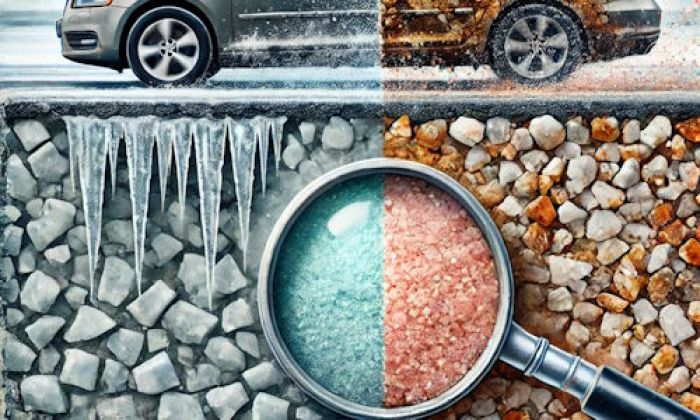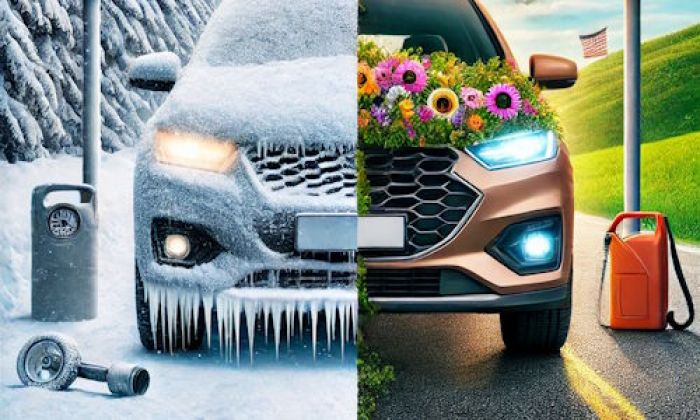Nobody ever wants to see a check engine light, but it shouldn't be ignored either. A lot of the time your car will run fine with the check engine light on, but it's important to get ahead of these issues before something goes wrong. A diagnostic tool can shed some light on the problem. Let's say you use a diagnostic tool to analyze the problem and receive the code P0449. That's nice to know, but what does it mean, and how do you fix it?
P0449 code highlights
- Level of urgency:Low
- Possible culprits:EVAP system, purge valve, piping, air leaks
- Price for repair:$150 - $600
- If neglected:Harsh engine work, lower efficiency
- DIY repairs:Possible but complicated
- Can you drive?Yes

What Does P0449 Mean?
P0449 is a diagnostic trouble code that means Evaporative System (EVAP) Vent Circuit Control Malfunction. This code means that there is a leak in the EVAP system, usually caused by the vent valve being stuck in the open position. The code can also come up because of a leak somewhere else in the EVAP system.
This problem won't stop your car from running. In fact, it is still safe to drive with this error, though the engine might run a little rough. However, your car will put out a lot more harmful emissions than normal and might fail an emissions test. You may also notice a drop in mileage as your car's fuel evaporates off. Most importantly, the check engine light will remain on, and this will make it hard to notice when major engine problems develop.
What is an Evaporative System Control Valve?
The Evaporative System Control Valve, or vent valve, is a valve that opens to allow air into the Evaporative Control System (EVAP) to keep it at the correct pressure. The fuel in your gas tank evaporates into a vapor that causes harm to the environment and is unhealthy to breathe in. The job of the EVAP system is to capture this vapor from the fuel tank and store it in a canister. The vapor is fed back into the gas tank.
What Causes P0449?
The EVAP system needs to be completely sealed to work effectively. If there is a small leak in the system, it can result in vapor escaping the system into the atmosphere. While it doesn't cause engine damage or failure, it can result in a drop in fuel efficiency and a fuel odor in the cabin of the car. The escaping vapors may also have hazardous health effects over time.
P0449 means that there is a problem with the vent valve. Usually, this means the component is damaged and stuck in the on position, allowing vapor to leak out of the system. However, the code can also show up when the vent valve is fine and there is a leak elsewhere in the system.
This system consists of many parts, such as the charcoal canister, fuel tank, purge valve, gas tank, and EVAP hoses. This makes it hard to identify where the leak is coming from. Some potential sources of the leak are:
- A damaged fuel tank.
- A faulty vent valve.
- A damaged vapor canister purge valve.
- A corroded fuel filler neck.
- A flooded or clogged charcoal canister.
- Damaged EVAP hoses.
- A missing or loose gas cap
How to Fix P0449
To fix this code, you will need to locate the source of the leak and seal it. If there is a damaged component, it will need to be removed and replaced.
Because of how many components the EVAP system contains, it can be hard to diagnose the cause of the problem. The process may take some time, but there are some steps you can follow to investigate the more obvious trouble spots and identify where the issue is arising from.
- Check the Gas Cap
You can start diagnosing the problem by looking at the most obvious culprit, the gas cap. If your gas cap is missing or damaged, or not properly closed, then it is probably the origin of the code. Replace or close the gas cap properly and check if the code still appears.
- Check the EVAP Hoses
If the gas cap is fine, then you can check the EVAP hoses. You can find them in the engine bay and running from the gas tank and charcoal canister. Examine the rubber hoses visually and squeeze them with your hand to look for any cracked or damaged hoses. Search carefully for tears or holes in the hose.
If you find any damaged hoses, you can choose to seal the hose with a silicon sealant or replace the hose entirely.
- Examine the Fuel Tank
If the fuel tank of your car is cracked or leaking, it can cause vapor to leak from the fuel system. This is relatively easy to check for, though you might need to get your hands and knees dirty. You will need to check for the fuel tank under your car.
You can find it toward the rear of the vehicle, on the same side as the gas tank nozzle. Check for cracks, rust, and leaks in the body of the tank. If you find any damage in the body of the tank, you can choose to have it welded or sealed, but that is generally a temporary solution. It's best to have the tank replaced.
- Check the Fuel Filler Neck
The fuel filler neck is the point where fuel enters the car. It delivers fuel from the pump to the gas tank. The Silverado uses a metal seal that can rust over time. If you drive regularly over wet or snowy roads, you should examine your fuel filler neck.
One of the signs of a faulty fuel filler neck is a fuel smell from the side of the car that houses the filler neck. If you also notice fuel leaks from that side of the car, especially after filling the car, then you are dealing with a corroded filler neck.
You will need to get a replacement filler neck, which usually comes with a replacement fuel hose. The replacement process involves lifting the car with a jack and removing the hose from the tank. You will also need to remove the bolts that attach the filler neck to the car. Once the old hose is removed, you can attach the new one in its place.
The process is simple, but the part itself is in a tight position. If it seems like it might be difficult to reach, or you don't have a jack available, then you can have a mechanic replace it for you.
- Damaged Charcoal Canister
The Charcoal Canister contains charcoal pellets that absorb fuel vapor from the EVAP system while the engine is off. When the engine is on, it releases vapor through the purge valve to be burned. To check for damage, you will need to remove the canister.
The position of the canister varies depending on the year of your Silverado, but it is usually located towards the rear of the car, above the muffler. Remove the hoses that feed into the canister. Use a wrench to remove the bolts from the canister. Now you should be able to remove the canister from its harness.
If fuel drains from the canister, then it is flooded. Flooded canisters can cause the charcoal pellets inside to degrade and break into smaller pieces that will clog the canister. To test for a clogged canister, you can use a can of compressed air. Remove the hoses from the canister and spray compressed air into one of the inlets. If the air comes out of the other one, then the canister is not clogged.
If your charcoal canister is flooded, clogged, or damaged, you will need to replace it with a new one.
- Check the Vent Valve
A common problem with the Silverado is a damaged vent valve. It is located on the charcoal canister, beneath the car, where it is exposed to dirt, water, and snow. As a result, they are often short-circuited by water or damaged by corrosion. You can visually examine it to look for signs of burnt wiring or rust.
If you see signs of damage to the vent valve, you will need to replace it.
- Faulty Vapor Canister Purge Valve
The vapor canister purge valve controls the amount and timing of the vapor released by the charcoal canister. If the valve is damaged, it can cause problems with maintaining the correct pressure in the EVAP system.
The purge valve is in the engine bay. You will need to remove the engine cover to access it. You can then test the valve for electrical faults and replace it if it is damaged.
Conclusion
If you receive a P0499 code while investigating a check engine light, then your car's EVAP system is leaking vapor into the environment. The code means Evaporative System (EVAP) Vent Circuit Control Malfunction, but it can be caused by a leak anywhere in the EVAP system. While this won't cause engine damage, and your car may still drive as normal, you may notice decreased fuel mileage and a gas smell from the car. The check engine light will also remain on and mask any serious engine problems.
Repairing the problem requires some automotive detective work. If you can identify the defective EVAP part, then you will be able to decide whether to repair it yourself or have a technician look at it.
About the authors
The CarAraC research team is composed of seasoned auto mechanics and automotive industry professionals, including individuals with advanced degrees and certifications in their field. Our team members boast prestigious credentials, reflecting their extensive knowledge and skills. These qualifications include: IMI: Institute of the Motor Industry, ASE-Certified Master Automobile Technicians; Coventry University, Graduate of MA in Automotive Journalism; Politecnico di Torino, Italy, MS Automotive Engineering; Ss. Cyril and Methodius University in Skopje, Mechanical University in Skopje; TOC Automotive College; DHA Suffa University, Department of Mechanical Engineering






Add comment